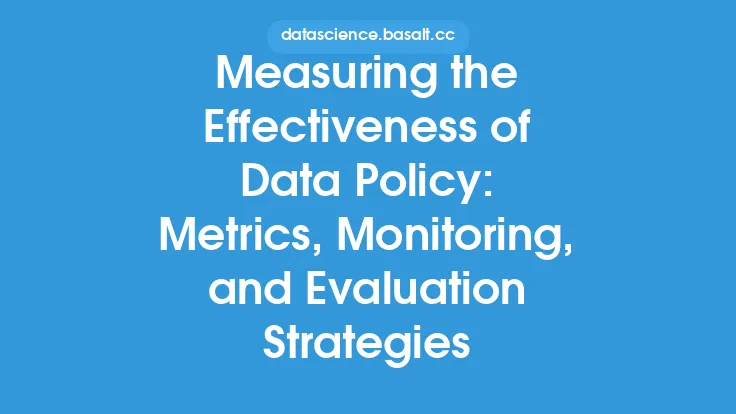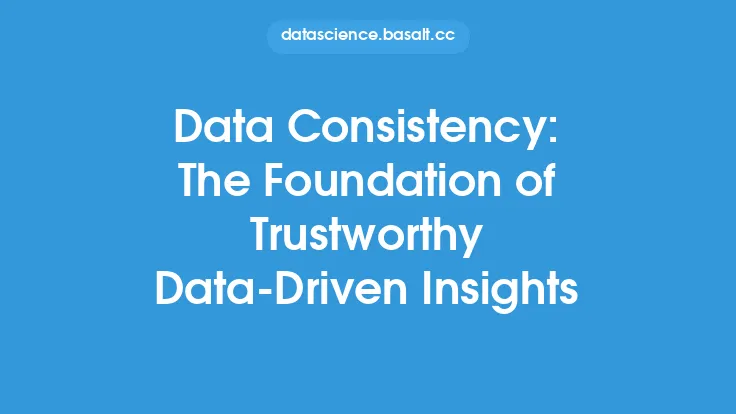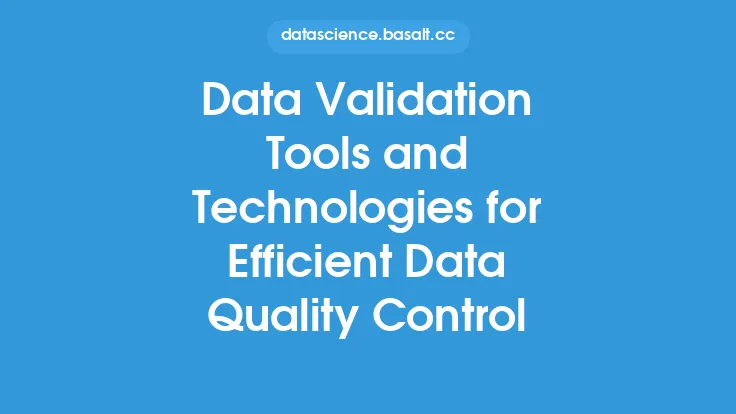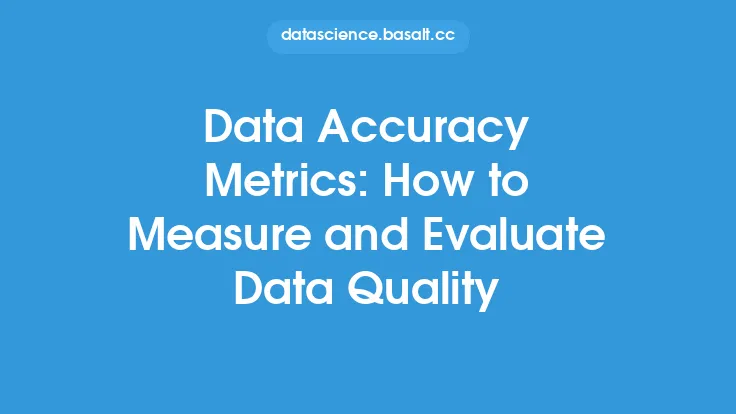Measuring and monitoring data consistency is a critical aspect of data quality, as it ensures that data is accurate, reliable, and trustworthy. Data consistency refers to the degree to which data is free from errors, inconsistencies, and contradictions. Inconsistent data can lead to incorrect insights, poor decision-making, and ultimately, negative business outcomes. Therefore, it is essential to measure and monitor data consistency to identify areas of improvement and ensure that data is consistent across all systems and applications.
Introduction to Data Consistency Metrics
Data consistency metrics are used to measure the level of consistency in a dataset. These metrics can be categorized into two main types: quantitative and qualitative. Quantitative metrics are numerical and can be used to measure the degree of consistency, while qualitative metrics are descriptive and provide a more subjective assessment of data consistency. Some common data consistency metrics include:
- Data completeness: This metric measures the percentage of complete records in a dataset.
- Data accuracy: This metric measures the percentage of accurate records in a dataset.
- Data consistency ratio: This metric measures the ratio of consistent records to total records in a dataset.
- Data inconsistency rate: This metric measures the rate at which inconsistencies occur in a dataset.
Data Consistency Tools and Technologies
There are various tools and technologies available to measure and monitor data consistency. These tools can be categorized into two main types: manual and automated. Manual tools require human intervention to measure and monitor data consistency, while automated tools use algorithms and machine learning techniques to identify inconsistencies. Some common data consistency tools and technologies include:
- Data profiling tools: These tools provide a detailed analysis of a dataset, including data distribution, data quality, and data consistency.
- Data validation tools: These tools check data against a set of predefined rules and constraints to ensure data consistency.
- Data quality software: This software provides a comprehensive platform for measuring and monitoring data quality, including data consistency.
- Data governance tools: These tools provide a framework for managing and monitoring data across an organization, including data consistency.
Data Consistency Measurement Techniques
There are several techniques used to measure data consistency, including:
- Data sampling: This technique involves selecting a random sample of data from a dataset to measure data consistency.
- Data auditing: This technique involves reviewing data to identify inconsistencies and errors.
- Data validation: This technique involves checking data against a set of predefined rules and constraints to ensure data consistency.
- Data reconciliation: This technique involves comparing data from different sources to identify inconsistencies and errors.
Data Consistency Monitoring Strategies
Monitoring data consistency is an ongoing process that requires regular checks and audits. Some common data consistency monitoring strategies include:
- Real-time monitoring: This strategy involves monitoring data consistency in real-time, as data is being entered or updated.
- Scheduled monitoring: This strategy involves monitoring data consistency on a scheduled basis, such as daily or weekly.
- Event-based monitoring: This strategy involves monitoring data consistency in response to specific events, such as data imports or updates.
- Threshold-based monitoring: This strategy involves monitoring data consistency based on predefined thresholds, such as data inconsistency rates.
Best Practices for Measuring and Monitoring Data Consistency
There are several best practices for measuring and monitoring data consistency, including:
- Establishing clear data quality standards and metrics
- Implementing automated data consistency tools and technologies
- Providing regular training and awareness programs for data stakeholders
- Continuously monitoring and auditing data consistency
- Implementing data governance frameworks and policies
- Using data quality software to measure and monitor data consistency
Common Challenges in Measuring and Monitoring Data Consistency
There are several common challenges in measuring and monitoring data consistency, including:
- Data complexity: Large and complex datasets can make it difficult to measure and monitor data consistency.
- Data volume: Large volumes of data can make it difficult to measure and monitor data consistency.
- Data variety: Diverse data sources and formats can make it difficult to measure and monitor data consistency.
- Limited resources: Limited resources, such as budget and personnel, can make it difficult to measure and monitor data consistency.
- Lack of standardization: Lack of standardization in data quality metrics and tools can make it difficult to measure and monitor data consistency.
Future of Data Consistency Measurement and Monitoring
The future of data consistency measurement and monitoring is likely to involve increased use of automated tools and technologies, such as artificial intelligence and machine learning. These tools will enable organizations to measure and monitor data consistency in real-time, identify inconsistencies and errors, and provide recommendations for improvement. Additionally, the use of data governance frameworks and policies will become more widespread, as organizations recognize the importance of data consistency in ensuring trustworthy and reliable data-driven insights.





